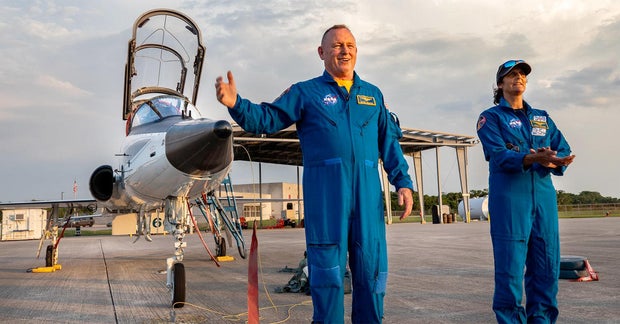The second attempt to send Boeing’s Starliner crew capsule into orbit was scrubbed just minutes before it was set to launch.
NASA astronauts Barry “Butch” Wilmore and Sunita Williams were strapped into the company’s Starline capsule and awaiting liftoff when the countdown was halted at three minutes and 50 seconds. The ship was initially scheduled for liftoff from pad 41 at the Cape Canaveral Space Force Station at 12:25 p.m. EDT, roughly the moment Earth’s rotation carried the pad into alignment with the space station’s orbit.
With only a split second to take off Saturday afternoon, there was no time to work the latest trouble and everything was called off.
The next possible launch window is Sunday. It was not immediately clear if they would be able to fix the problem in time.
The long-awaited flight will be the first piloted launch of an Atlas 5 and the first for the Atlas family of rockets since astronaut Gordon Cooper took off just a few miles away on the Mercury program’s final flight 61 years ago.
Likewise, it will be the first piloted flight of the Starliner, Boeing’s answer to SpaceX’s Crew Dragon, an already operational, less expensive spacecraft that has carried 50 astronauts, cosmonauts and civilians into orbit in 13 flights, 12 of them to the space station, since an initial piloted test flight in May 2020.
NASA funded the development of both spacecraft to ensure the agency could launch crews to the outpost even if one company’s ferry ship were grounded for any reason.
Already running years behind schedule because of budget shortfalls and a variety of technical problems that cost Boeing more than $1 billion to correct, NASA had hoped to get the Starliner into orbit on May 6. But the launch was scrubbed when United Launch Alliance engineers detected trouble with a pressure-relief valve in the rocket’s Centaur upper stage.
The Atlas 5 was hauled off the pad and back to ULA’s Vertical Integration Facility where the Centaur valve was quickly replaced. But in the wake of the launch scrub, Boeing engineers saw signs of a small helium leak in the Starliner’s propulsion system.
The leak was traced to a flange in plumbing that delivered pressurized helium to drive one specific reaction control system jet in the Starliner’s service module. The leak was characterized as “very small,” but engineers needed to show it would not drastically worsen in flight and cause problems for other thrusters.
After extensive analysis and testing, mission managers concluded the spacecraft could be safely launched as is, saying that even if the leak rate was 100 times worse than so far observed, it would not pose a risk to the crew or the mission.



